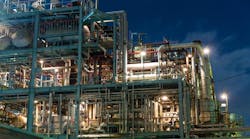Industrial environments are growing more intelligent than ever before. Rapid advancements in Industrial Internet of Things (IIoT) devices, computing technology, and automated machinery are helping industrial operators monitor and respond to data that can signal equipment failure or damage. By identifying equipment issues before they occur, industrial operators can minimize the risk and financial impact of unplanned system downtime.
Yet despite recent excitement, predictive maintenance is not a new concept. Industrial operators have long conducted routine inspections in attempts to anticipate potential equipment issues.
What is new is the powerful combination of data-recording, IIoT devices and edge-computing systems that can analyze this information in real-time.
Together, these technologies create the possibility of condition-based monitoring for critical equipment, providing plant operators a new level of insight into the state of their equipment.
The following best practices are emerging for the deployment of predictive-maintenance systems in industrial settings:
Clearly define success—and build infrastructure to support it
In some settings, unplanned downtime has a particularly large impact. These environments usually are physically expansive or include a small number of critical devices, such as an oil-processing plant or a hospital. In these environments, equipment failure can prove catastrophic. The same is true of remote or hard-to-reach environments…when equipment goes down, it can take days to restore functionality.
Many organizations will rush to invest in predictive maintenance without a clear definition of their organization’s unique goals. Paying attention to the ROI of a predictive-maintenance strategy is essential—organizations exploring predictive-maintenance investments should establish clear KPIs for project success.
Don’t reinvent the wheel
Predictive-maintenance equipment is not a silver bullet. Predictive-maintenance equipment should always augment, rather than replace, routine inspection to insulate organizations against added risk of downtime. Similarly, businesses should still maintain equipment-performance records for each machine to inform future decisions and understand the unique peculiarities of different devices.
Invest in the future
Businesses investing in predictive maintenance should always choose the most modern products available, regardless of cost. Why? With today’s blistering pace of innovation, investments should be evaluated on future ROI, not present-day cost. Many industrial businesses also struggle to anticipate their future technical needs.
For this reason, operators should choose systems that fully conform to modern standards, to maximize the lifetime of each device and eliminate the risk of repeat investment. Cutting corners by choosing outdated systems will come back to bite even the savviest businesses.
Choose equipment for your unique needs
Each manufacturer faces unique needs for predictive-maintenance equipment. For example, some manufacturers should aim to purchase devices equipped with vibration analysis and embedded sensor technology, two powerful indicators of equipment performance. Other businesses, like liquid processors, for example, will want temperature, pressure and viscosity sensors in their devices.
Explore machine learning
Pioneering machine learning can amplify the value of predictive maintenance. Machine-learning systems are extremely useful when analyzing large data sets, allowing savvy industrial operators to more rapidly identify data anomalies that can signal equipment issues. This can further minimize the risk and severity of downtime events.
Develop your predictive-maintenance workforce
The biggest cost of predictive-maintenance systems is not equipment, it is talent. Many existing industrial settings lack personnel with strong IIoT or edge-computing skill sets. For this reason, investing in employee training is essential. Similarly, designating clear employee ownership over predictive-analytics deployments can ensure project success.
Training employees from various disciplines in predictive maintenance can also pay long-term dividends. A cross-functional approach helps a business prepare for the loss of key predictive-maintenance skills in the event of employee turnover or departure. More importantly, training junior employees in predictive maintenance can be an investment in long-term cultural or tribal knowledge of existing systems.
In many industrial settings, predictive-maintenance investments can arm operators with a new level of insight. While individual businesses face unique needs, these best practices can help maximize the ROI of any predictive-maintenance initiative.
Jason Andersen is vice president, business line management, with Stratus Technologies



